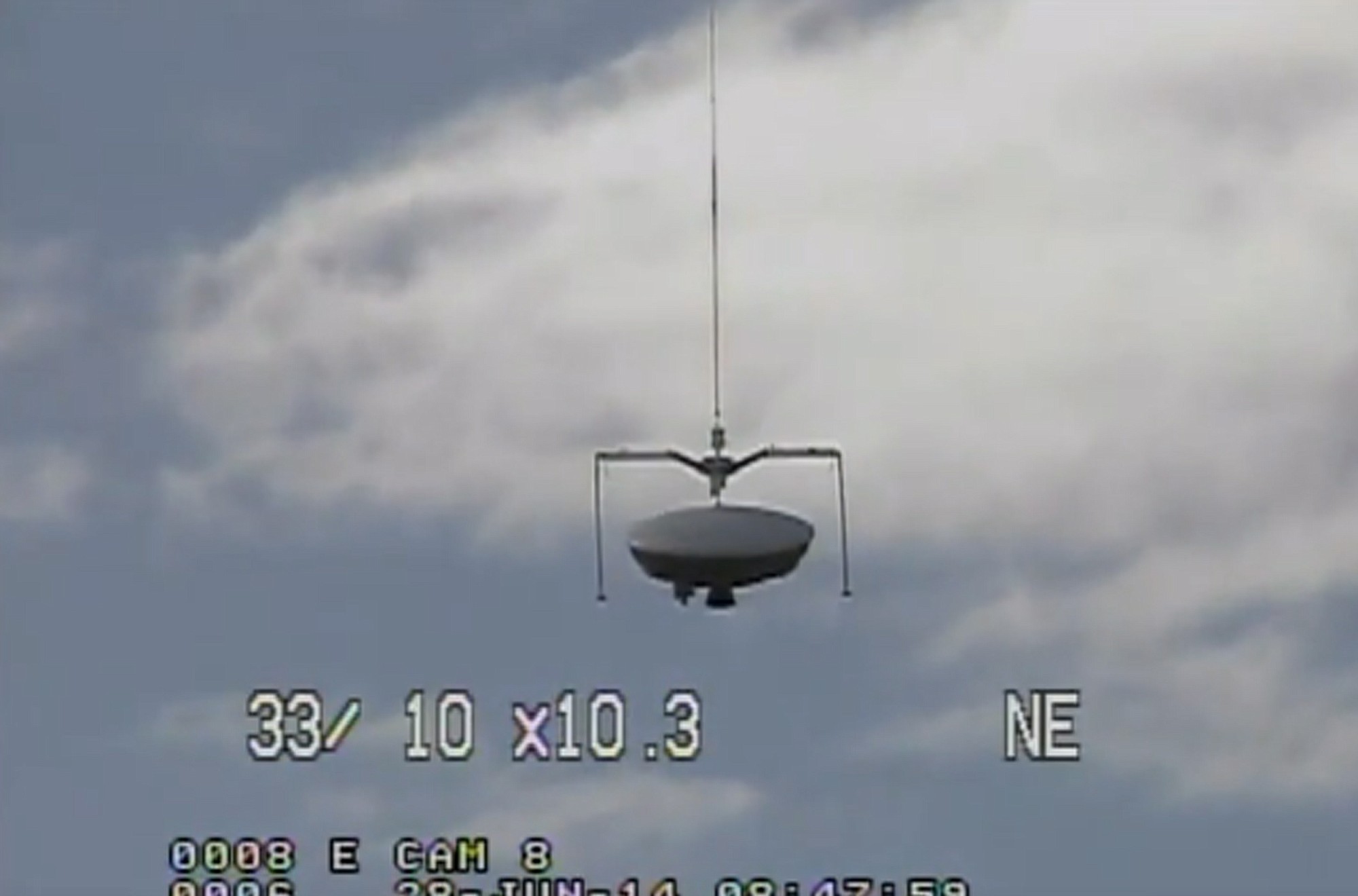LOS ANGELES — NASA has tested technology designed to lower spacecraft — and one day even astronauts — safely onto Mars, with the agency declaring the experiment a qualified success even though a giant parachute tangled on the way down.
Saturday’s $150 million experiment is the first of three involving the Low Density Supersonic Decelerator vehicle. Tests are being conducted at high altitude on Earth to mimic descent through the thin atmosphere of the Red Planet.
A balloon hauled the saucer-shaped craft 120,000 feet into the sky from a Navy missile range on the Hawaiian island of Kauai. Then the craft’s own rocket boosted it to more than 30 miles high at supersonic speeds.
As the craft prepared to fall back, a doughnut-shaped tube around it expanded, creating atmospheric drag to dramatically slow it down from Mach 4, or four times the speed of sound.
Then the parachute unfurled — incompletely. The vehicle made a hard landing in the Pacific Ocean.
“In a way, that’s a more valuable experience for us than if everything had gone exactly according to plan,” he said.
A ship was sent to recover a “black box” designed to separate from the vehicle and float. Outfitted with a GPS beacon, the box contains the flight data that scientists are eager to analyze.
Since the twin Viking spacecraft landed on the red planet in 1976, NASA has relied on a parachute to slow landers and rovers.
But the latest experiment involved both the drag-inducing device and a parachute that was 110 feet in diameter — twice as large as the one that carried the 1-ton Curiosity rover in 2011.
Cutting-edge technologies are needed to safely land larger payloads on Mars, enabling delivery of supplies and materials “and to pave the way for future human explorers,” a NASA statement said.
Technology development “is the surest path to Mars,” said Michael Gazarik, head of space technology at NASA headquarters.



